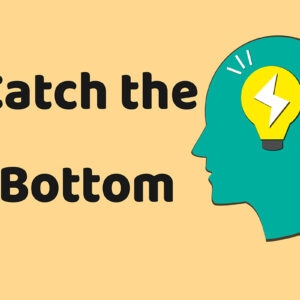Increase Your Investment Plan in 2023 is the most common line when building your future. An increasing Investment plan typically involves a diversified portfolio of stocks, bonds, and other assets with a time horizon of at least 5 to 10, or it can be 20 years or more. The key to success with a long-term investment plan is to stick with it, even though market ups and downs.
Basic Rules
Multiple investment plans have a diversified portfolio of different types of investments to spread risk and maximize potential returns. Your investment can always be some specific term in 2023. This approach can help moderate the impact of market fluctuations on individual investments and potentially lead to more stable overall returns.
Examples of multiple investment plans can include a mix of stocks, bonds, real estate, commodities, and other assets, based on an individual’s financial goals and risk tolerance. Having a mix of investments can help reduce the impact of market volatility on an individual’s portfolio, as the performance of one investment can help offset losses in another.
Impact of Psychology
The Best investment plan in 2023 is mostly a challenging matter because our psychological impact indicates that the market is too high. It’s important to periodically review and re-balance your portfolio to ensure that it remains aligned with your financial goals and risk tolerance over time. Additionally, seeking professional financial advice can help determine the right mix of investments for your individual circumstances. In 2023 if we want to start investing then we have to design our portfolio very carefully to increase the high return under safe side money management.
Before Start your Investment Plan
Starting an investment typically involves the following steps:
- Determine your financial goals: What do you want to achieve with your investment (e.g. retirement savings, down payment for a home, etc.) and what is your timeline for achieving those goals?
- Assess your risk tolerance: How much risk are you comfortable taking on in pursuit of your financial goals?
- Develop a diversified portfolio: Consider a mix of investments such as stocks, bonds, real estate etc. to diversify your risk.
- Research investment options: Review investment options that align with your financial goals and risk tolerance.
- Open an investment account: Choose a brokerage firm and open an investment account to buy and sell investments/ stocks.
- Monitor your portfolio: Regularly review your investments and make adjustments as needed to ensure you’re on track to reach your financial goals.

Health is also an Investment Plan
Yes, you read the right line. Investing in your health can have significant long-term benefits and can be considered a form of investment. Here are some ways to invest in your health:
- Eating a balanced diet: Consuming a diet rich in fruits, vegetables, whole grains, and lean protein can help maintain good health and reduce the risk of chronic diseases.
- Exercise regularly: Regular physical activity can improve cardiovascular health, build strength, and increase overall energy levels.
- Getting enough sleep: Getting adequate rest can improve mental clarity, boost immunity, and promote overall well-being.
- Avoid unhealthy habits: Habits such as smoking and excessive alcohol consumption can have a negative impact on health and increase the risk of chronic diseases.
- Managing stress: Finding effective ways to manage stress, such as through exercise, meditation, or therapy, can improve mental health and reduce the risk of stress-related health problems.
Investing in your health can have significant long-term benefits and can help improve quality of life and potentially reduce health care costs over time.

So, you just imagine everything is under the Investment plan if you think about the impact for the long-term in 2023. Here one more thing is that you can start investing in health insurance to secure your life, and it will help to cover the financial crisis during an accidental situation.
Financial Investment Instruments?
Stocks:
Stocks represent ownership in a company. When you buy a stock, you become a shareholder and have a claim on the company’s assets and earnings. The value of a stock can fluctuates based on the company’s performance and market conditions. Investors can earn returns through price appreciation and dividends. You can start your investment through the stock market for a long-term investment plan. Make sure that you have proper investment guidelines to start the investment. Here, risk & return both are high. So, please consult an expert before starting your investment. If you want to start learning about the stock market, then you can go through the link below for more content.
Bond:
Bonds are debt securities issued by governments, municipalities, or corporations to raise capital. When you buy a bond, you lend money to the issuer in exchange for periodic interest payments and the return of the principal amount at maturity. Bonds are generally considered less risky than stocks but offer lower potential returns. This is also the best option for safe secure investment for your investment portfolio.
Mutual Fund:
Mutual funds pool money from multiple investors to invest in a diversified portfolio of stocks, bonds, or other assets. Professional fund managers manage these investments on behalf of investors. Mutual funds offer diversification and are suitable for those who prefer a hands-off approach to investing.
Exchange-Traded Funds (ETFs):
ETFs are similar to mutual funds but trade on stock exchanges like individual stocks. They offer diversification, liquidity, and lower expense ratios compared to many mutual funds. ETFs can track various market indices or follow specific investment strategies.
Real Estate Investment Trusts (REITs):
REITs are companies that own, operate, or finance income-generating real estate in various sectors (commercial, residential, healthcare, etc.). Investors can buy shares of REITs, which provide exposure to real estate assets without directly owning properties.
Certificates of Deposit (CDs):
CDs are time deposits offered by banks with fixed terms and fixed interest rates. They are low-risk investments, and in return for keeping your money in the CD for a specified period, you receive interest. Early withdrawal may result in penalties.
Commodities:
Investing in commodities involves buying assets like gold, silver, oil, or agricultural products. Investors can gain exposure to commodity prices without owning the physical assets through commodity futures contracts or commodity-focused ETFs.
Options:
Options are derivative contracts that provide the right (but not the obligation) to buy or sell an asset at a predetermined price (strike price) within a specified period. They are commonly used for hedging or speculative purposes and can be complex.
Cryptocurrencies:
Cryptocurrencies are digital or virtual currencies that use cryptography for security. Examples include Bitcoin, Ethereum, and many others. Cryptocurrencies can be highly volatile and speculative, appealing to investors seeking higher risk and potential rewards.
Savings Accounts:
Savings accounts are low-risk, interest-bearing deposit accounts offered by banks. They are suitable for short-term savings and emergency funds but typically offer lower returns compared to other investment options.
Remember that each investment instrument carries its own set of risks and potential rewards. It’s essential to conduct thorough research, consider your risk tolerance, and financial goals, and seek professional advice if needed before making investment decisions.
Why do you INVEST and What do to INVEST?
INVEST is a used to help remember key factors to consider when developing an investment plan:
I – Goals: Identify your financial goals and what you want to achieve with your investments.
N – Needs: Consider your current financial needs and the resources you have available to invest.
V – Vehicle: Choose the investment vehicles best suited to your goals and risk tolerance, such as stocks, bonds, mutual funds, or real estate.
E – Entry point: Determine the best time to invest, considering market conditions and your financial situation.
S – Strategy: Develop a strategy for investing, including how much to invest, how often to invest, and how to diversify your investments.
T – Time Horizon: Consider your time horizon for the investment, including when you will need to access the funds and how long you are willing to hold the investment.
By following the INVEST framework, you can create a well-planned and diversified investment portfolio that aligns with your financial goals and risk tolerance. It’s important to regularly review and adjust your investment plan to ensure it remains aligned with your financial goals and risk tolerance over time.
INVEST for INVESTMENT PLAN in 2023
In this year 2023, it’s easy to prepare an investment plan. Spend some time that can be 7 days or maybe 30 or maybe 90. But a final list needs to be prepared which can give a long return against this investment plan. Every time before investment we always have to break some points.
- Investment in Life Insurance
- Investment in Health Insurance
- Investment in Mutual Fund
- Investment in Fixed Deposit
- Investment in the Stock Market
- Investment in Land / Properties
- Investment in Ornaments
- Investment in Time
- Any many more
Let’s start investment today and consult your financial advisor for a better proposal.
For more content, you can check here.
You can follow my social platforms here.
500+ YouTube content. You can subscribe for more live content here.
2200+ Twitter Posting on live proof here.
Follow the Facebook page for updates.




